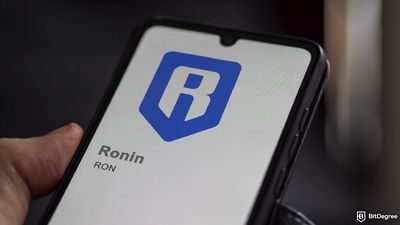In recent years, the concept of the metaverse has gained tremendous traction, to the point of nowadays being considered a buzzword. It is a term used by many businesses, tech enthusiasts, and people in the blockchain industry, but despite this, there are still looming questions that many people have about it. Once individuals get their heads around the metaverse being a virtual space where users can congregate together, they often want to know who owns the metaverse, and who exactly it belongs to. This is an important question, but it is not one with a direct or completely clear answer.
A Shared Space
Ownership of the metaverse is a sensitive topic. Ever since Facebook changed their name to Meta, they have both catapulted the term into the mainstream so that people outside of the blockchain space even recognize it, as well as confused the public into thinking that they own it. In truth, despite the rebranding, the concept of the metaverse has little to do with the company– at least not exclusively. At its core, the metaverse is simply an immersive and shared virtual location where people can come together, socialize, work, and explore. The term first originated in 1992, predating Facebook’s existence by quite some time.
Now that we have clarified this, we are better prepared to approach the topic of belonging and ownership. One way we could look at this is through a Web3 and blockchain-based lens, as the concept of the metaverse is very popular in these communities. One reason why blockchain enthusiasts are excited about the metaverse is because of the way ownership could work within them.

Did you know?
Want to get smarter & wealthier with crypto?
Subscribe - We publish new crypto explainer videos every week!
What is Terra Luna? History & Crash Explained (ANIMATED)


Think about how public blockchains currently function. They are shared databases that everybody can access, and that anybody can add to by being a miner or staker (or contributing in some other way depending on the consensus mechanism of the chain). They are collaborative and open projects that encourage community building and teamwork. Rather than being owned by one entity, blockchains are typically thought of as being owned by a collective of people, where governance is decided on, and distributed, across a wide array of individuals.
This openness and collaboration is what sets blockchain tech apart from centralized projects and systems. With this in mind, blockchain fans have been pushing for the metaverse in the hopes that it, too, can function much like the current day’s blockchain tools. Therefore, a blockchain-based metaverse would likely belong to the community that maintains and inhabits it, similar to how blockchains like Ethereum, Binance Chain, and Bitcoin run.
Community Connectivity
Blockchain enthusiasts like the metaverse because they envisage a highly interconnected ecosystem of virtual projects. To understand why, we need to recognize that historically, the metaverse gained traction around the time when interoperability was becoming a very real possibility. Projects like Polkadot and COSMOS made huge strides in creating infrastructures that allowed multiple blockchains to join together and share resources.

This was viewed as a huge positive because it meant that chains no longer lived in isolation, and that they could all work together. Better yet, it meant that dApps could be created to serve multiple chains. Overall, it began to reduce the tensions that some communities had between each other, where some were viewed as rivals. The dispelling of this phenomenon was actually one of the major aims that Gavin Wood, co-founder of Ethereum and Polkadot, and arguably the first person to coin the term Web3, was hoping for.
The idea was that, if everybody could connect together, then the need for competition would drop, and it would further lead to more cross-chain collaboration. This type of thinking often gets applied to the metaverse as well, with the consideration that if virtual spaces can interconnect, then it will allow for more open communities because people can freely move from one place to another with their avatar, and perhaps even their belongings (in the form of NFTs).
This relates directly to the idea of belonging and ownership because, greater collaboration and movement of people suggests reduced competition. In turn, reduced competition suggests collective ownership rather than the ownership of one organization or body.
View it like this: can you think of any platforms that make the process of migrating from their platform to an alternative one easy? This practice is rarely seen because the companies that own a platform naturally want to keep people on it as much as possible as this will help with their revenue. But if there are two metaverse projects that people can easily switch between, then it suggests those projects are not competitors despite offering similar features, which must make them part of the same ecosystem or realm.
Blockchain Metaverse Governance
Following along with this blockchain view of the metaverse, we now come to the notion of governance. Generally, people tend to reduce the question of belonging to the question of control, meaning that whoever governs the metaverse would be the people to who it belongs to. For example, this is how we discuss democratic nations. We say that a country with democratically elected officials is a country that belongs to the people. In contrast, countries or nations which have less democratic activity are sometimes viewed as belonging to the leaders exclusively, rather than the population as a whole.

This is because, if a place follows democratic ideals, then technically, any resident of that place can become a leader of it, or can at least have some voting power. Viewpoints like this are often applied to the metaverse, too. This is because the metaverse is essentially meant to be a shared space; not entirely different from a country.
In a public, blockchain-based metaverse, those with governance controls would likely be coin or token holders, with their assets being used as a way for them to vote on protocols, measures, and ideas. Not only could they vote on matters, but they may even be able to take on leadership roles such as becoming a committee member, or perhaps becoming developers.
However, it is important to note that if the metaverse does not specifically mean one project, then certain votes and governance models cannot be applied to every aspect of it. Rather, governance would likely be slightly different on every blockchain-based metaverse project. The coins or tokens you use to vote might be different, as well as the leadership positions and decision-making protocols.
This is not necessarily a bad thing, as variety can be good for creating more diverse spaces, but it is something to keep in mind. It may also mean that some metaverse projects will feel like they belong to different people. For instance, a project that has a very open way of voting and handling governance may feel like it belongs to the general user base more than a project which only hands out votes to a select few.
Can You Afford to Belong?
A public blockchain-based metaverse seems like a great idea. It sounds inclusive and open, and it feels like it should belong to anybody who essentially participates. But there is a problem with this system, and it is hiding in plain sight. While public blockchains theoretically allow anybody to vote and participate in governance, votes are counted by the number of coins or tokens a person has, which means they are directly connected to each person’s financial situation.
This means that those with the most money have the most voting power, and are likely to have the loudest voices when it comes to decision-making. It further means that even though blockchain metaverse projects might have a strong democratic streak running through them, they still struggle to be completely inclusive in their voting capabilities. This does not mean that you will need money to enter every metaverse project, but it does mean that for a blockchain-based metaverse project, you will need money if you want to take part in any votes.
Sadly, that could mean if you cannot afford to vote, this part of the metaverse might not belong to you. Or, at least, it might not feel like it belongs to you. Disappointingly, projects like this are prone to becoming plutocracies, meaning they are systems ruled by the wealthiest participants. This is currently the case with most blockchains as well, although there is a small sub-division of developers in this space working hard to resolve this issue of money being tied to votes/governance.
These are called proof-of-personhood developers, and they are building blockchains that try to distribute one-vote-per-wallet, whilst also preventing people from creating two wallets at a time. It is early days for this type of technology, but it is an important endeavor to explore, especially in the age of the metaverse, where we are collectively trying to understand how ideas of ownership and belonging function.
What About the Corporate Metaverse?
We have focused exclusively on the blockchain community’s idea of the metaverse. But there is another important perspective, and that is the view from Big Tech corporations and other centralized companies. While they, too, see the metaverse as a shared virtual space, they have some slightly different ideas about how it should operate, and therefore the notion of belonging may work a little differently, too.

Let’s take a look at governance, as this has been our central method of figuring out belonging, so far. A corporate metaverse project will run differently for at least one reason: decision-making will happen in a slightly more closed way. It will be centralized, and so those who have the power to make decisions are less likely to be members of the community itself, and more likely to be employees or shareholders of the company running the metaverse project.
This is unsurprising as it will probably not be too different from how Web2 platforms and tools work nowadays. A good example of this is Twitter, where users have little control over how the website functions. User requests are often ignored (such as the ongoing desire for an edit button to tweets which has lasted for years), and since management recently changed, even those who work directly at the company have struggled to have their voices heard.
If Twitter was a country, we would say it is undemocratic. But, Twitter is not a country, it is a company, and so the need for proper governance is much less pressing. If it was part of the metaverse, then the matter would have more teeth. This is because the metaverse is meant to be a place for us to spend our lives in, to socialize, and to feel connected to each other. For all intents and purposes, it is meant to be an extension of this world, only in a less tangible way. When a place is this important, people really start to worry about who actually owns and controls it.
A Return to Feudalism?
This alludes to a larger issue. These concerns about the way a corporate metaverse will function hark back to a much older fear: feudalism. It is hard to define this concept, but in broad strokes, it is a socio-political system with a strict hierarchy, where those who own land have complete control, and can grant land to others in exchange for money or services. Plus, practically everything created on the land will be the property of the landowner. This has a worryingly similar structure to how a corporate metaverse project could work, with the creators of the company owning the whole land, making all the decisions, and then handing parts of the land out to others in exchange for goods, money, or services.
In more recent times, this is referred to as neo-feudalism (or tech feudalism), where Big Tech corporations rest at the very top of the hierarchy and have control over how we use their services, and can take control over the ideas or posts that we make. Original feudalism is a system that has been banished to the middle ages, but this newer form of feudalism may be taking form, and the place it could be most prevalent is in the metaverse. Of course, at the moment, it is hard to say just how feudalistic these systems will get, but it is a concern that we should collectively keep an eye on.
That is what draws people to blockchain-based metaverses, where it can be said with more clarity that it belongs to the public because the public governs it. A corporate metaverse does not imply this. That is not to say public governance could never happen in a corporate setting, but it would require them to be very open about who decision-makers are, and to be deeply fluid about leadership, allowing metaverse residents to vote and even seek leadership positions. Blockchain technology could help with this by tracking votes and chains of command, even if it is handled in a mostly centralized way.
An Unlikely Savior of the Working Classes
However, it is not all bad news! A centralized and corporate metaverse has the chance of solving blockchain’s biggest governance problem: money being tied to votes. The reason that blockchain projects count votes with money or assets is that their decentralized nature means there is no way to properly verify whether somebody is an individual, and therefore there is no way of distributing equal votes. But a centralized metaverse could use Know-Your-Customer tools to vet people based on confidential information such as passports or official documents (similar to how exchanges like Coinbase and KuCoin work), and then provide votes to them. This could even be a free process, meaning that poorer or less advantaged people could get representation.
This might sound ironic, as blockchain-based metaverse projects are often viewed as being by the people and for the people, yet their inability to count votes on a person-by-person basis might make them unfriendly to working-class individuals. In this case, less wealthy people might find that they feel a stronger sense of belonging in a centralized and corporate metaverse. Of course, with proof-of-personhood blockchains in the works, the plutocracy problem may one day disappear, but that will likely take some time before it happens.
Belonging as a Social Phenomenon
So far, our discussion of who the metaverse belongs to has centered around the question of power and governance. This is definitely one way of finding out where you belong, as having your voice heard and being able to enact change is a very important part of feeling respected in a place and having influence in it. But, it is not the only way of defining this.

Another method of measuring somebody’s belonging is whether they feel comfortable and safe. In other words, whether they feel at home. These are questions that we ask people when they move to a new country, or become part of a new group. We could apply this thinking to the metaverse, too. In this sense, those who truly belong to the metaverse are those who feel the most comfortable and safe. Think of it like this: if you log into the metaverse and it feels familiar to you, and all your friends are there with you, then why would it not belong to you?
If this does not include you yet, then do not worry! The metaverse is very new, and many people have not had the chance to even get involved in it, let alone settle in and relax. However, if the metaverse fully takes off, then more and more people will exhibit these feelings.
This is a great way of exploring the nature of belonging because, instead of using rigid rules such as figuring out who has governance and voting power, we can view it as a more emotive and fluid concept. For this reason, it brings a naturally more human aspect to the discussion.
This way of thinking largely circumvents any questions of governance or control, but it does not entirely ignore them. It is reasonable to argue that people will feel more comfortable in a place where their voice can be heard, rather than not. We need a level of power in some capacity to feel safe, as we need to have autonomy over our bodies, and as much autonomy over our surroundings as possible, so that we can shape it into what works best for us. But, using a more emotive definition of belonging is extremely important as it allows us to expand the discourse beyond cold socio-political ideas.
Conclusions
If the question of this discussion was “who should the metaverse belong to?” then the answer would be very different. The metaverse is designed to be an extension of this physical world, built for social interaction and interconnectivity. It should belong to everybody. Nobody should be denied new tools for socializing, as we are social creatures, and so we owe it to each other to offer these capabilities.
However, this is a discussion of who the metaverse does belong to currently. And that is a much thornier question, as it asks us to examine what the state of the metaverse is like right now, rather than what it ought to be in the future. While both questions have huge overlaps, in essence, one is an exploration into the current nature of the metaverse, and the other would be a roadmap or manifesto into what it should ideally become.
As of right now, the question of who it belongs to is highly complex and consistently changing as the standards and practices of the metaverse evolve before our eyes. It could arguably belong to the corporations who build and operate it, the individuals who have governance powers, or simply those who feel a sense of attachment and affinity to it.
We have multiple answers for two reasons. For starters, the metaverse is still in the process of being constructed, and so very few things are currently set in stone. Plus, the nature of belonging is complex and naturally open-ended, as it can be viewed as either a feeling, or a set of logical conditions. However, as time goes on and this space further refines, answers to this question will likely develop and crystalize on a global scale.






















